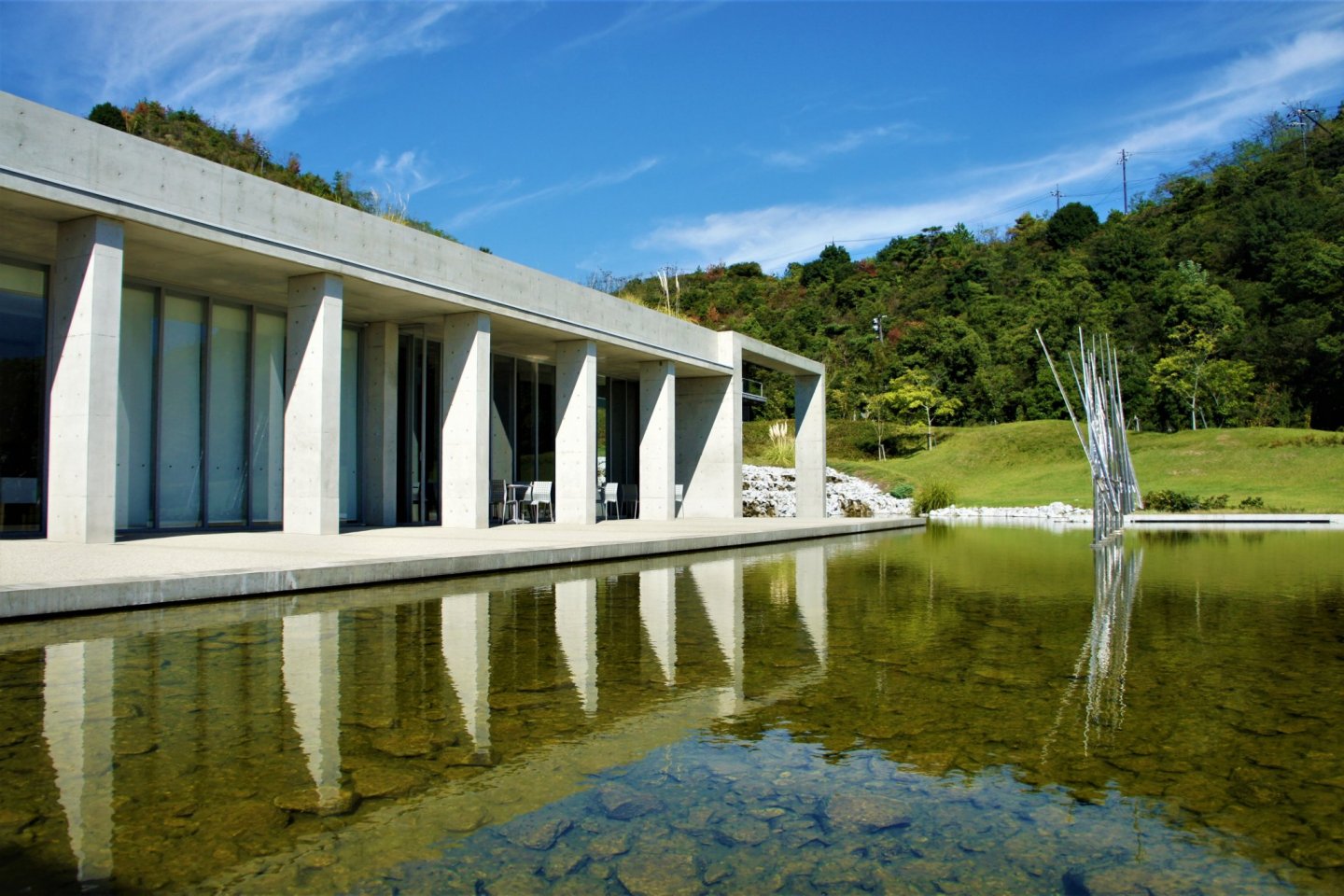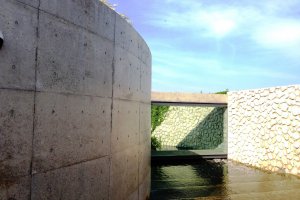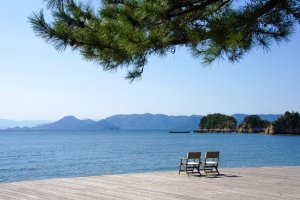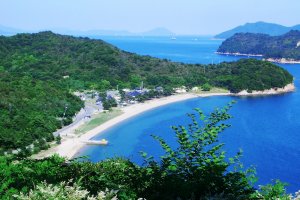Wake up somewhere you did not even imagine in your dreams. Where olive groves face the Pacific Ocean and giant spotted and tiger striped pumpkins induce child-like giggles in adults and youngsters alike.
For visitors from another planet, Benesse House will inspire the same curiosity as the crop circles in England. From the air, all you see is three shapes: a circle, square and triangle, as if all human achievement can be reduced to the simplicity of an infant learning toy. Look closer and you will see Tadao Ando’s genius, in designing a hotel museum that takes the dramatic mountain and sea landscapes as its skeleton, and de-constructs all architectural elements so it is just you communing with nature and the sublime weightlessness of space, a theme explored and experienced in the James Turrell installation in nearby Chichu Museum.
For its most exclusive (read adults only) guests, a hushed private monorail will transport you to the top of the mountain, where another shape, an oval, invites you to interact with it at every angle. Its size makes it almost impossible to photograph in one shot, but that does not deter visitors from finding the optimal viewpoint. Get down on all fours with your cheeks on the ground, or up above, like an owl looking down on its nest. Never mind. The place is for relaxation as much as a setting for rediscovering our physical relationship with the built environment.
For Tadao Ando, art is not just reserved for museums, but something to be lived. Like the movie, Night in the museum, hotel guests can experience these exhibits in pyjamas, long after the day trippers are long gone, and it is only you, the artworks, and the stillness of the island. The sculptures and installations may look inanimate, but step a little closer and they scream in loud whispers that only you can hear. Like Bruce Nauman’s 100 live and die series. His installation of flashing neon, whose alternating messages like “cry and live”, “play and die” mesmerise like a flashing traffic light.
By now you may think that I am mad and should stay in the disused sanatorium on the next island. Staying on an island can do this to you. Stripped of the noise and prosaic chatter of the mainland, this museum hotel is as much a reaction to the soulless routine of the business world as it is a resort for sun-seekers.
In line with this philosophy, the retouched rooms from the nineties were designed without televisions, where luxury is defined as much as watching the motions of the sun and moon as soaking in the deep baths pampered with Thann skincare products.
On the other hand, you can strip down with strangers at the Cultural Melting Bath, a communal hot tub that blends well being with Cai Guo-Qiang’s art. Five medicinal herbs and Taihu rocks are arranged to Feng Shui to balance your mind and body.
The bedroom’s floor to ceiling window catches every light and shadow, and you can enjoy the calmness of camping without any of the discomfort. The Bose speakers and complementary WiFi are recent concessions for the modern holidaymaker, but I suggest you turn them off, pull open the wooden writing desk and take in the textural pleasures from reading one of their many compendiums on the island and its museums.



































